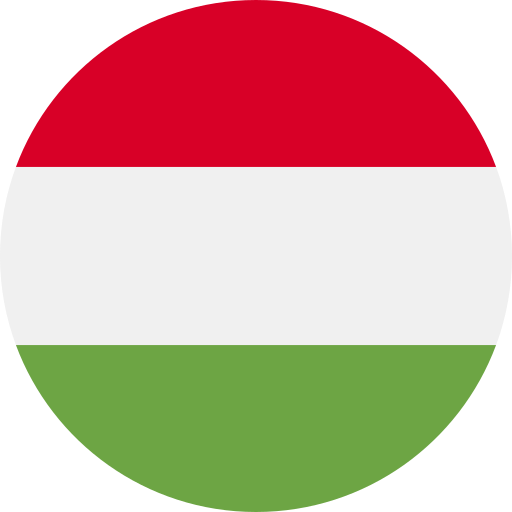Key Takeaways
- Historical Significance: Hungarian’s evolution as an official language reflects the unique cultural identity and resilience of the Hungarian people throughout various political changes.
- Language Development: The roots of Hungarian trace back over a thousand years to the Finno-Ugric group, with notable influences from Latin, Ottoman Turkish, and German due to historical interactions.
- Legislative Milestones: Key legal acts, such as the 1844 Language Act and the Austro-Hungarian Compromise of 1867, were crucial in establishing Hungarian as an official language across government and education.
- National Movements: Cultural pride and national movements in the 19th century significantly contributed to advocating for Hungarian’s status as a unifying force among citizens amidst foreign influences.
- Sociopolitical Factors: National identity played a vital role in elevating Hungarian’s status; it became emblematic of resilience against external pressures and essential for civic participation.
- Current Challenges: Despite its official recognition today, Hungarian faces challenges from globalization and modern linguistic trends that threaten its traditional forms.
Ever wondered how Hungarian became an official language in its own right? This fascinating journey reflects not just the evolution of a unique language but also the rich tapestry of culture and history behind it.
Historical Context
Hungarian’s journey to becoming an official language is rich with cultural and historical significance. Its development reflects the unique identity of the Hungarian people and their resilience through various political changes.
Early Development of the Hungarian Language
The roots of the Hungarian language trace back over a thousand years. It belongs to the Finno-Ugric group, which makes it distinct from most languages in Europe. The earliest written records date back to the 10th century, showcasing its evolution alongside Hungary’s formation as a nation. This early development set the stage for Hungarian as a primary medium for communication among diverse communities within the region.
Influence of Foreign Languages
Throughout history, Hungarian absorbed elements from numerous foreign languages due to trade, conquest, and cultural exchange. Latin played a significant role during medieval times, especially in education and administration. Ottoman Turkish introduced new vocabulary during centuries of occupation, while German influence grew significantly after Habsburg rule began in 1526. These interactions enriched Hungarian but also posed challenges regarding national identity and linguistic purity debates that emerged later on.
Understanding this historical context provides insight into why Hungarian became an official language—a reflection not only of linguistic evolution but also of national pride and unity amidst external influences.
Legal Milestones
Hungarian’s journey to official language status involved several key legal milestones that shaped its recognition and use. Understanding these milestones provides insight into the language’s importance in Hungary’s national identity.
Key Legislation
The first significant legislative act recognizing Hungarian as an official language emerged in 1844 with the introduction of the Language Act. This law mandated the use of Hungarian in government, education, and public life, marking a pivotal shift towards linguistic nationalism. Subsequent laws reinforced this position, particularly during the Austro-Hungarian Compromise of 1867, which granted greater autonomy to Hungary and solidified Hungarian’s status within various administrative domains. In modern times, constitutional amendments have further protected Hungarian as a state language, ensuring its prominence across all levels of governance.
Role of National Movements
National movements played a crucial role in advocating for Hungarian’s official status. The period leading up to World War I saw a surge in cultural pride and political activism aimed at promoting Hungarian as a unifying force among citizens. Groups like the National Assembly championed initiatives focused on preserving and elevating the language amid foreign influences. These efforts emphasized not only linguistic rights but also cultural identity and heritage. The resilience shown by activists during turbulent times highlighted their commitment to maintaining Hungarian as an essential element of national unity.
Sociopolitical Factors
Hungarian’s evolution into an official language reflects the complex sociopolitical landscape of Hungary. Several key factors influenced this transition, showcasing the interplay between language and national identity.
The Impact of National Identity
National identity significantly shaped Hungarian’s status as an official language. Throughout history, the Hungarian people emphasized their distinct culture and heritage, especially during periods of foreign domination. Language served as a vital marker of identity, uniting citizens under a common banner. As movements for autonomy gained momentum in the 19th century, cultural pride surged alongside demands for political recognition. Activists championed Hungarian not just as a means of communication but as a symbol of resilience against external pressures. This emphasis on linguistic nationalism nurtured a collective consciousness that made Hungarian integral to the nation’s identity.
Language in Education and Government
Language policies further solidified Hungarian’s role in education and government sectors. The 1844 Language Act mandated its use across various public domains, ensuring that citizens experienced governance in their native tongue. By integrating Hungarian into educational curricula, the state fostered fluency among younger generations while reinforcing cultural values through literature and history lessons taught in their mother tongue. The Austro-Hungarian Compromise of 1867 marked another pivotal moment; it entrenched Hungarian within administrative frameworks, granting it equal standing with German in formal contexts. These developments underscored not only governmental support but also cultivated pride among citizens who viewed mastery of their language as essential to participation in civic life.
The intertwining relationship between sociopolitical dynamics and language illustrates how Hungarian emerged not merely as a mode of communication but as an emblematic force shaping Hungary’s path through history.
Current Status
Hungarian holds a significant place as an official language today, reflecting its deep-rooted cultural heritage and historical importance. It functions as the primary language for government, education, and public life in Hungary.
Official Recognition Today
Hungarian’s status is protected by constitutional provisions that ensure its use across various sectors. Laws mandate Hungarian in schools, ensuring that students learn in their native language from early education through higher studies. Government documents, legal proceedings, and public announcements primarily occur in Hungarian, solidifying its role within state operations. Additionally, regional laws support the rights of minority languages where applicable while prioritizing Hungarian to maintain national unity.
Challenges Facing the Hungarian Language
Despite its official status, Hungarian encounters several challenges. Globalization has introduced numerous foreign influences into everyday vocabulary and expressions—English terms often dominate technology and business discussions. This influx can raise concerns about linguistic purity among purists who advocate for preserving traditional forms of the language. Furthermore, younger generations might gravitate toward English or other languages due to media consumption trends and social interactions online. Maintaining a balance between modernity and tradition remains crucial for sustaining Hungarian’s relevance in an evolving world while fostering pride in linguistic heritage.
Conclusion
Hungarian’s journey to becoming an official language is a remarkable testament to cultural resilience and national identity. It’s not just a means of communication; it embodies the spirit of the Hungarian people throughout history. The legal milestones and sociopolitical dynamics that shaped its status reflect deep-rooted values and aspirations.
As you explore the evolution of Hungarian, you’ll find that its ongoing relevance in modern society hinges on balancing tradition with contemporary influences. Navigating globalization while preserving linguistic heritage is vital for future generations. Embracing this duality will ensure that Hungarian continues to thrive as a symbol of unity and pride in Hungary’s rich cultural tapestry.
Frequently Asked Questions
What is the historical significance of the Hungarian language?
The Hungarian language has a rich history dating back over a thousand years to the Finno-Ugric group. Its earliest written records appear in the 10th century, reflecting Hungary’s development as a nation. The language embodies the identity and resilience of the Hungarian people through various political changes, marking its importance beyond mere communication.
How did foreign influences shape the Hungarian language?
Hungarian has absorbed elements from Latin, Ottoman Turkish, and German due to trade, conquest, and cultural exchange. These interactions enriched the language while sparking debates about national identity and linguistic purity, illustrating how external influences have shaped its evolution over time.
What milestones led to Hungarian becoming an official language?
Key legal milestones include the 1844 Language Act, which mandated Hungarian in government and education. The Austro-Hungarian Compromise of 1867 further reinforced this status. Modern constitutional amendments continue to protect Hungarian as a state language, emphasizing its role in national pride and unity.
How does Hungarian serve as an emblematic force for national identity?
Language became a vital marker of identity for Hungarians during foreign domination periods. It united citizens under a shared culture and heritage while fostering collective consciousness. This relationship highlighted how Hungarian evolved into more than just communication—becoming central to Hungary’s national identity.
What challenges does modern Hungarian face today?
Despite its official status, Hungarian faces challenges from globalization, particularly with English influence in everyday vocabulary. Younger generations often lean towards English due to media trends, raising concerns among purists about maintaining linguistic purity while balancing tradition with modernity in an evolving world.







